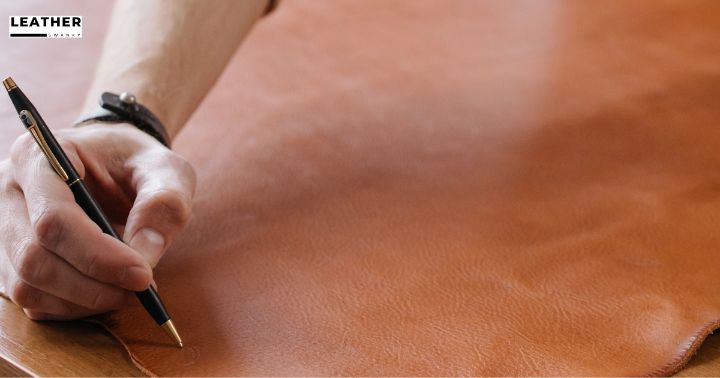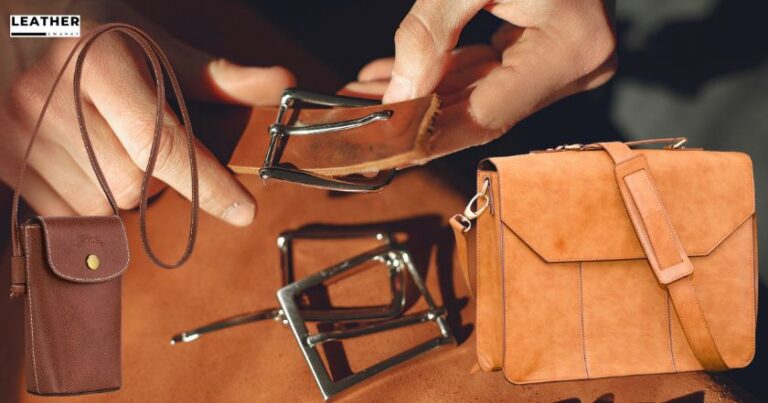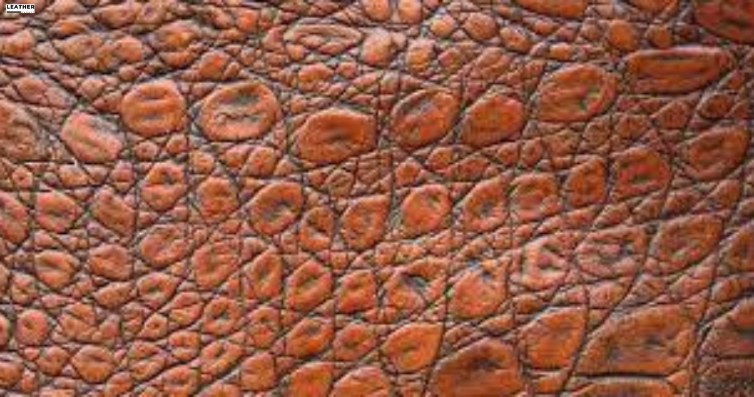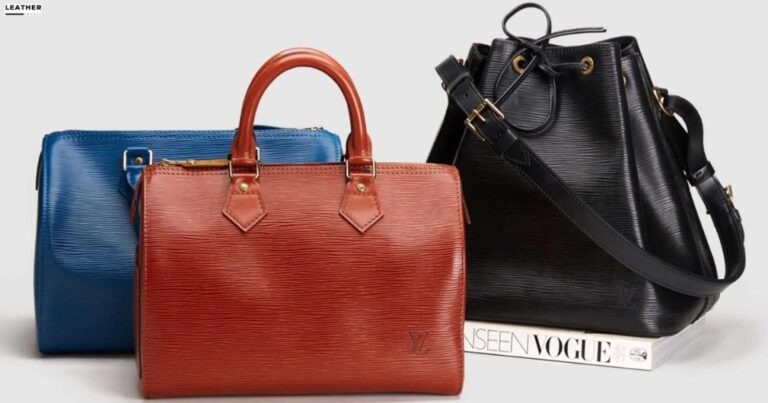What Is Lambskin Leather? Characteristics, Uses, Pros and Cons
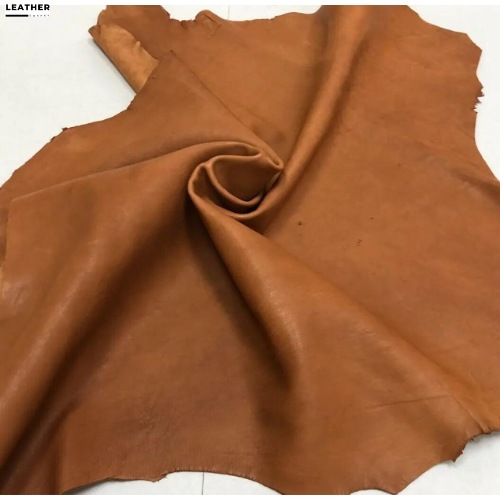
You’ve probably heard of leather, but do you really know what is lambskin leather?
It's a luxurious, soft type of leather made from the hide of young sheep. You'll find it in high-end fashion items, but what makes it so special?
In this article, we’ll delve into the characteristics, pros, cons, and proper care techniques of lambskin leather.
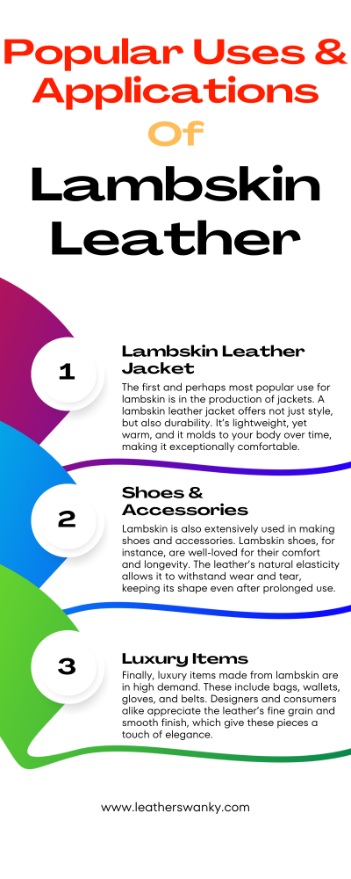
Jump to a Specific Section
- 1 Basic Overview
- 2 How Lambskin Leather Is Made
- 3 Is Lambskin Leather Real Leather?
- 4 Lambskin Leather Vs. Other Types of Leather
- 5 Types of Lambskin Leather
- 6 Different Grades of Lambskin Leather
- 7 Characteristics of Lambskin Leather
- 8 Popular Uses and Applications of Lambskin Leather
- 9 Pros and Cons of Lambskin Leather
- 10 How to Care for Lambskin Leather
- 11 Final Thoughts
- 12 Frequently Asked Questions
- 12.1 What Is the Cost of Lambskin Leather Compared to Other Leathers?
- 12.2 How Does the Weather Affect Lambskin Leather Products?
- 12.3 Can Lambskin Leather Cause Allergies or Skin Irritation?
- 12.4 Are There Any Famous Brands Known for Their Lambskin Leather Products?
- 12.5 Is lambskin leather waterproof?
- 12.6 How do I clean lambskin leather?
- 12.7 What is the history of lambskin leather?
- 12.8 How durable is lambskin leather?
- 13 Resources Used for Research
Basic Overview
- Lambskin leather is made from the hide of young sheep and is known for its softness, suppleness, and lightweight properties.
- The production process involves cleaning, tanning, and treating the hides, with the exact methods and chemicals used varying to create different types of lambskin leather.
- There are different types and grades of lambskin leather, including sheepskin, full grain, suede, nappa, top-grain, and genuine lambskin leather, each with its own characteristics and uses.
- While lambskin leather has a luxurious feel and appearance, it is more delicate than other types of leather and requires regular cleaning, conditioning, and careful maintenance.
How Lambskin Leather Is Made
When it comes to creating lambskin leather, there are several key steps you’ll need to understand.
- Sourcing the Hide: The process begins with the hide from a lamb. These hides are usually a byproduct of the food industry, ensuring no part of the animal goes to waste.
- Preparation: The hides are then cleaned and prepared. This involves removing any remaining flesh and hair to ensure that the leather produced is smooth and high-quality.
- Tanning: The last major step is the tanning process. This is where the hides are treated with chemicals to prevent them from decomposing and to enhance their durability. It is during this process that the hides transform into the lambskin leather we recognize.
The exact methods and chemicals used in the tanning process can vary, which can result in differences in the final lambskin leather produced.
Is Lambskin Leather Real Leather?
Yes, lambskin leather, also known as lamb leather, is indeed real, genuine leather. Real leather is a natural product that is made from the hides or skins of animals.
Lambskin leather is no exception. It’s created from the hide of a lamb, which is why it’s often referred to as lamb leather.
What sets lambskin leather apart from other types of real leather is its softness and flexibility.
Lambskin Leather Vs. Other Types of Leather
Comparing lambskin leather to other types of leather, you’ll find some noticeable differences in texture, durability, and appearance.
The characteristics of lambskin leather set it apart, making it an exceptional choice for certain applications.
- Texture: Lambskin leather is renowned for its soft, smooth texture. It’s more delicate than cow leather, which is thicker and rougher. Goat leather, on the other hand, has a pebbled texture that’s not as smooth as lambskin.
- Durability: While lambskin is soft and supple, it’s not as durable as cow or goat leather. These leathers are more resistant to wear and tear, making them suitable for heavy-duty usage. But if you’re after luxury and comfort, lambskin can’t be beaten.
- Appearance: Lambskin has a luxurious appearance that’s often compared to Nappa leather. Both are smooth and shiny, but lambskin has a more natural, less processed look. In comparison, cow and goat leather tend to have a matte, more rustic appearance.
Types of Lambskin Leather
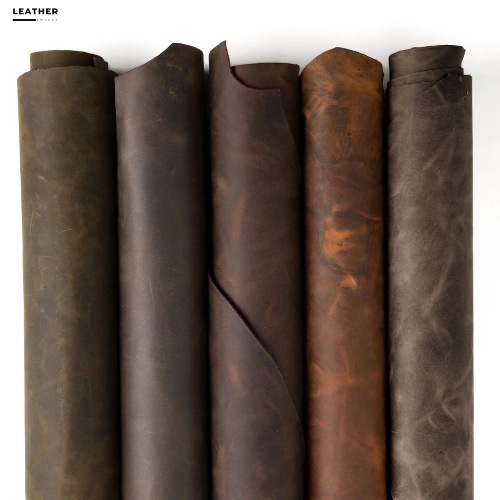
Lambskin leather has various types, each with its distinct qualities and uses.
Being knowledgeable about these types can help you make informed decisions, whether you’re buying a jacket, shoes, or furniture upholstery.
| Type | Description | Features |
|---|---|---|
| Sheepskin | A subtype of lambskin leather | Incredibly soft, warm, and durable |
| Full-grain lamb hides | The highest quality lambskin leather | Unaltered and containing the entire grain, resilient, long-lasting, and develops a beautiful patina over time |
| Suede lambskin | Processed lambskin leather | Soft with a distinctively napped surface |
| Nappa lambskin | Processed lambskin leather | Smooth and flexible |
Understanding these types of lambskin leather will ensure you pick the right material for your needs.
Different Grades of Lambskin Leather
Lambskin leather, renowned for its softness and flexibility, comes in various grades, each with unique characteristics that determine its value and use.
- Full-Grain Lambskin Leather: This is the highest grade of lambskin leather you can find. It’s made from the outermost layer of the lamb’s skin, preserving its natural imperfections and fine grain. Full-grain lambskin provides the most durable and high-quality leather goods.
- Top-Grain Lambskin Leather: This grade is thinner and more pliable than full-grain. The skin’s top layer is sanded off to remove imperfections, resulting in a less durable but smoother and more uniform leather.
- Genuine Lambskin Leather: This is the lowest grade of lambskin leather. It’s made from the remaining layers after the top is removed. While it’s more affordable, it doesn’t provide the same quality or durability as the other grades.
Characteristics of Lambskin Leather
Lambskin leather is renowned for its exceptional softness, suppleness, and lightweight nature, making it a favorite choice for high-end fashion and luxury items.
Here are some of the main characteristics:
- Elastic and durable: Despite its soft texture, lambskin leather is surprisingly durable and can withstand wear and tear. It’s ideal for items that need to stretch and conform to the body, such as jackets, gloves, shoes, and handbags.
- Smooth and luxurious: Lambskin leather has a finer, smoother grain than cowhide, giving it a sleek, elegant look.
- Susceptible to scratches: Lambskin leather is softer than other types of leather, making it more susceptible to scratches and scuffs. Handle with care.
Popular Uses and Applications of Lambskin Leather
You’ll find lambskin leather used in a variety of luxury goods due to its unique characteristics.
It’s soft, smooth, and with a texture that’s unmatched by other types of leather. This makes it highly sought after in the fashion industry.
- Lambskin Leather Jacket: The first and perhaps most popular use for lambskin is in the production of jackets. A lambskin leather jacket offers not just style, but also durability. It’s lightweight, yet warm, and it molds to your body over time, making it exceptionally comfortable.
- Shoes and Accessories: Lambskin is also extensively used in making shoes and accessories. Lambskin shoes, for instance, are well-loved for their comfort and longevity. The leather’s natural elasticity allows it to withstand wear and tear, keeping its shape even after prolonged use.
- Luxury Items: Finally, luxury items made from lambskin are in high demand. These include bags, wallets, gloves, and belts. Designers and consumers alike appreciate the leather’s fine grain and smooth finish, which give these pieces a touch of elegance.
Pros and Cons of Lambskin Leather
Despite its extensive use in the fashion industry, lambskin leather has its own set of advantages and drawbacks that you need to consider.
Pros:
- Luxurious feel: Lambskin leather is incredibly soft, supple, and lightweight, making it ideal for high-end fashion items.
- Elegant appearance: Its texture and sheen add an elegant touch to any piece, which is why it’s often used in designer collections.
Cons:
- Delicate: Lambskin leather is more delicate than cowhide or sheepskin leather, making it more susceptible to scratches and tears.
- High maintenance: It requires regular cleaning and conditioning to retain its appearance.
- Expensive: Lambskin leather tends to be more expensive due to its premium quality and the meticulous care involved in its production.
How to Care for Lambskin Leather
Caring for your lambskin leather items might seem challenging, but it’s essential if you want to maintain their exquisite feel and look.
With proper care, lambskin leather can last for years, retaining its soft texture and luxurious appearance.
Here’s a simple three-step guide to help you clean lambskin leather:
- Gentle Cleaning: Start by using a soft, dry cloth to gently wipe down the lambskin leather, removing any surface dirt or dust. Avoid using harsh chemicals or abrasive materials that could damage the leather’s texture.
- Conditioning: Apply a high-quality leather conditioner to the lambskin. This will help to restore its natural oils, keeping it soft and supple. It’s advisable to test the conditioner on a small, inconspicuous area first, to ensure it doesn’t alter the leather’s color.
- Storing: Store your lambskin leather items in a cool, dry place away from direct sunlight. Prolonged exposure to heat or light can cause the leather to dry out and crack.
Remember, the key to maintaining the beauty of lambskin leather is regular, gentle care and avoiding extreme conditions. Also, avoid using excessive water or harsh chemicals.
Final Thoughts
Lambskin leather is a luxurious, soft, and durable material made from the hide of young sheep.
It’s a real, high-quality leather that stands out from other types due to its unique characteristics. However, like all goods, it has its pros and cons.
With the right care, your lambskin leather items can last and remain in top-notch condition.
So, whether it’s for fashion, home décor, or automotive uses, lambskin leather could be an excellent choice for you.
Frequently Asked Questions
What Is the Cost of Lambskin Leather Compared to Other Leathers?
Generally, lambskin is pricier due to its softness and high quality. However, it’s still less expensive than exotic leathers like crocodile or ostrich.
How Does the Weather Affect Lambskin Leather Products?
Weather significantly impacts lambskin leather products. In damp conditions, they can absorb moisture and become distorted. Extreme heat can also cause them to dry out and crack. It’s vital to protect them from such conditions.
Can Lambskin Leather Cause Allergies or Skin Irritation?
While it’s rare, you could experience allergies or skin irritation from lambskin leather. This usually occurs due to the dyes and chemicals used in the tanning process, not the lambskin leather itself.
Are There Any Famous Brands Known for Their Lambskin Leather Products?
Indeed, several renowned brands specialize in lambskin leather products. Chanel, for instance, is famous for its lambskin handbags. Similarly, All Saints and Acne Studios are known for their premium lambskin jackets.
Is lambskin leather waterproof?
No, lambskin leather is not naturally waterproof. However, it can be treated with waterproofing agents to enhance its water resistance.
How do I clean lambskin leather?
Cleaning lambskin leather requires gentle care. It is recommended to use a mild leather cleaner and a soft cloth to remove any dirt or stains. Avoid using excessive water or harsh chemicals.
What is the history of lambskin leather?
Lambskin leather has been used for centuries in various cultures. It has been prized for its luxurious feel and has been used to make garments and accessories.
How durable is lambskin leather?
Lambskin leather is durable, but not as durable as cowhide leather. It is important to take proper care of lambskin leather to maintain its longevity.
Resources Used for Research
- General principles of care, storage and display
- Manufacture of Exotic Leather and Small Leather Goods from Ovine Stomach
- The manufacture of leather
- Conservation of leather and related materials
- Sewing with Leather and Suede: Tips, Techniques and Inspiration
- Caring for Leather, Skin and Fur
- Hand Sanitizers: A Review on Formulation Aspects, Adverse Effects, and Regulations
- Leather Processing & Tanning Technology Handbook

